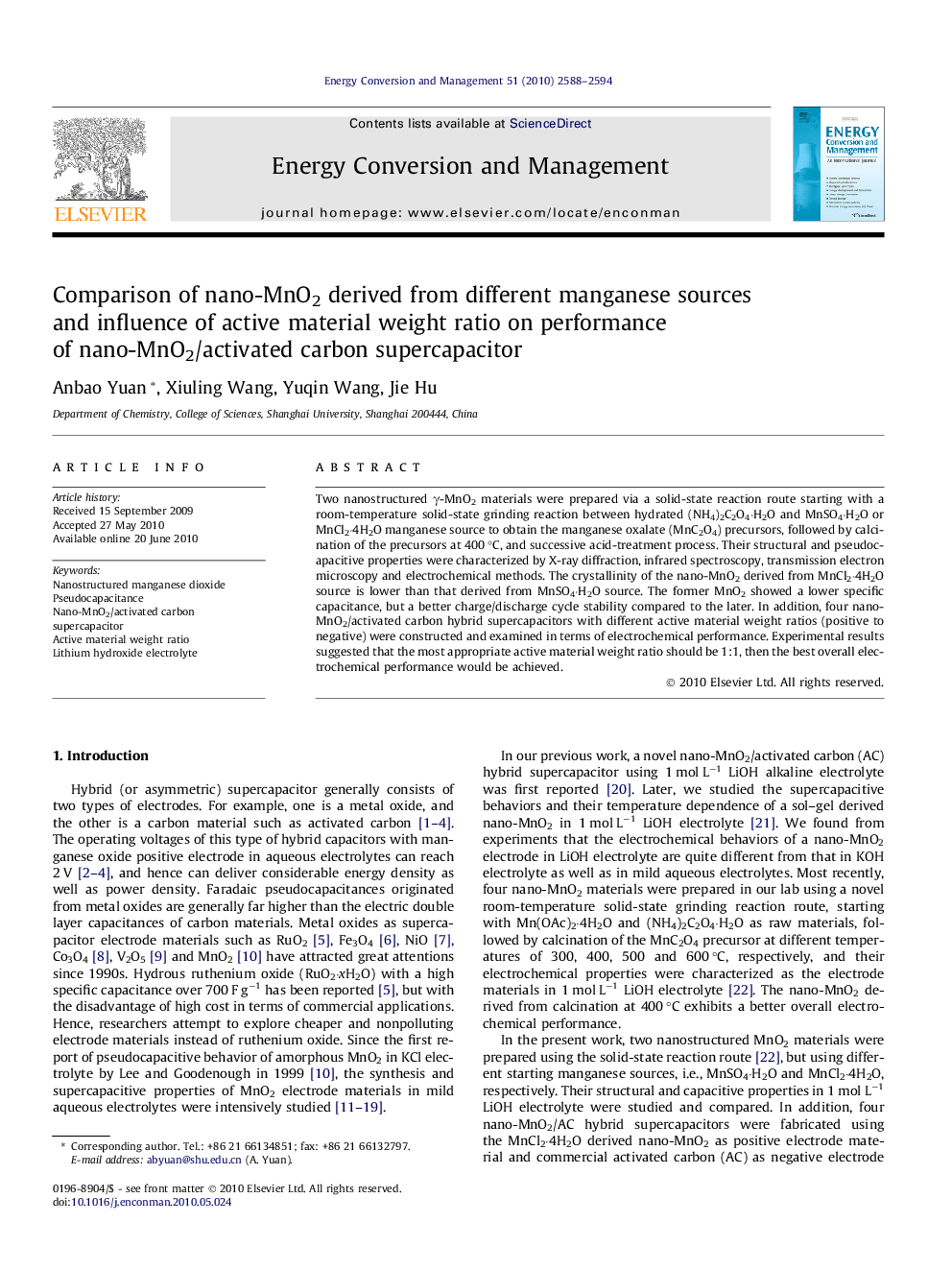| Article ID | Journal | Published Year | Pages | File Type |
|---|---|---|---|---|
| 764646 | Energy Conversion and Management | 2010 | 7 Pages |
Two nanostructured γ-MnO2 materials were prepared via a solid-state reaction route starting with a room-temperature solid-state grinding reaction between hydrated (NH4)2C2O4·H2O and MnSO4·H2O or MnCl2·4H2O manganese source to obtain the manganese oxalate (MnC2O4) precursors, followed by calcination of the precursors at 400 °C, and successive acid-treatment process. Their structural and pseudocapacitive properties were characterized by X-ray diffraction, infrared spectroscopy, transmission electron microscopy and electrochemical methods. The crystallinity of the nano-MnO2 derived from MnCl2·4H2O source is lower than that derived from MnSO4·H2O source. The former MnO2 showed a lower specific capacitance, but a better charge/discharge cycle stability compared to the later. In addition, four nano-MnO2/activated carbon hybrid supercapacitors with different active material weight ratios (positive to negative) were constructed and examined in terms of electrochemical performance. Experimental results suggested that the most appropriate active material weight ratio should be 1:1, then the best overall electrochemical performance would be achieved.
